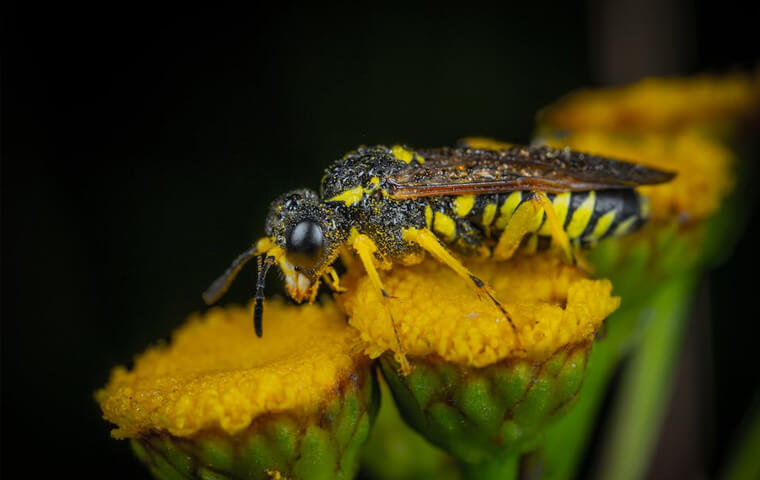Flying insects are some of the most dreaded pests there are. It’s because they startle people with their abrupt and speedy appearances and noisy buzzing. They are the definition of annoying, as they tend to swarm around constantly. It’s too bad that isn’t the worst of it. Many winged bugs can bite or sting humans, allowing for the possibility of injury, illness, or the transmission of disease. When some land on food or surfaces, they can contaminate them with germs. Also, bees and wasps, in particular, often carry harmful venom.

How Do Yellow Jackets Look & Behave? What Are The Dangers?
Most people mistakenly think yellow jackets are bees because of their yellow and black coloring. However, these critters have far less hair on their bodies, and their waists are slimmer. Also, several are white and black. Their wingspan surpasses their 0.39one-half to three-quarter of an inch long frame.
As mentioned previously, yellow jackets consume bugs to survive. They also feed on meat, sugary items, and nectar. Given this, the land of homes and businesses is a draw for these pests. You’ll see them fluttering near gardens, trash cans, and grills. Once they get comfortable, they’ll begin to build paper-looking nests around tree bases, structural voids, and sidewalks. Check your decks, patios, and attic areas too. They usually go for the ground level, but they won’t avoid shrubs or branches. If you see an aerial cocoon, you can say you have an infestation.
Yellow jacket stings cause pain, swelling, redness, warmth, and itching. Whether you’re allergic to their toxins or not, you could have a negative physical reaction. These insects are capable of striking you many times in seconds; they are the most aggressive of the local wasps. Further, they can communicate with other yellow jackets to help them attack. You might experience the following:
- Fainting
- Fever
- Nausea
- Diarrhea
- Headache
- Flushed skin
- Cardiorespiratory arrest
- Convulsions
- Kidney complications
- Respiratory difficulties
- Inflammation of the brain, nerves, or blood vessels
How Can You Prevent Yellow Jackets?
You can’t control nature, but it’s possible to reduce the number of organic elements yellow jackets are attracted to on your property. Additionally, you can eliminate potential nesting spots with monitoring and cleaning. Here are the specific tasks you can perform:
- Regularly groom plants, flowers, and shrubs.
- Keep gardens areas several feet from your property.
- Sit greenery two feet or more away.
- Get trash and decaying organic debris, such as dead leaves, off your lawn.
- Routinely wash your vents and gutters.
- Use a canister with a tight-fitting lid for garbage.
- Clean your porches and decks often, and don’t leave food on them.
- Close up gaps around windows, doors, and foundations.
- Call Bugaboo Pest Control if you have problems with insects yellow jackets eat.
What Can Bugaboo Pest Control Do About Yellow Jackets?
Put away any notions you have about swatting at a yellow jacket nest with your broom, and forget spraying one with an insecticide. Even if a nest seems abandoned, don’t take a chance messing with it. The outcomes could be critical.
To keep from being stung and going to the hospital, contact us at Bugaboo Pest Control. Our trained technicians have the skillset and professional tools to safely remove a yellow jacket nest and apply industrial-grade treatments to prevent recurrences. Call today for a free quote!



